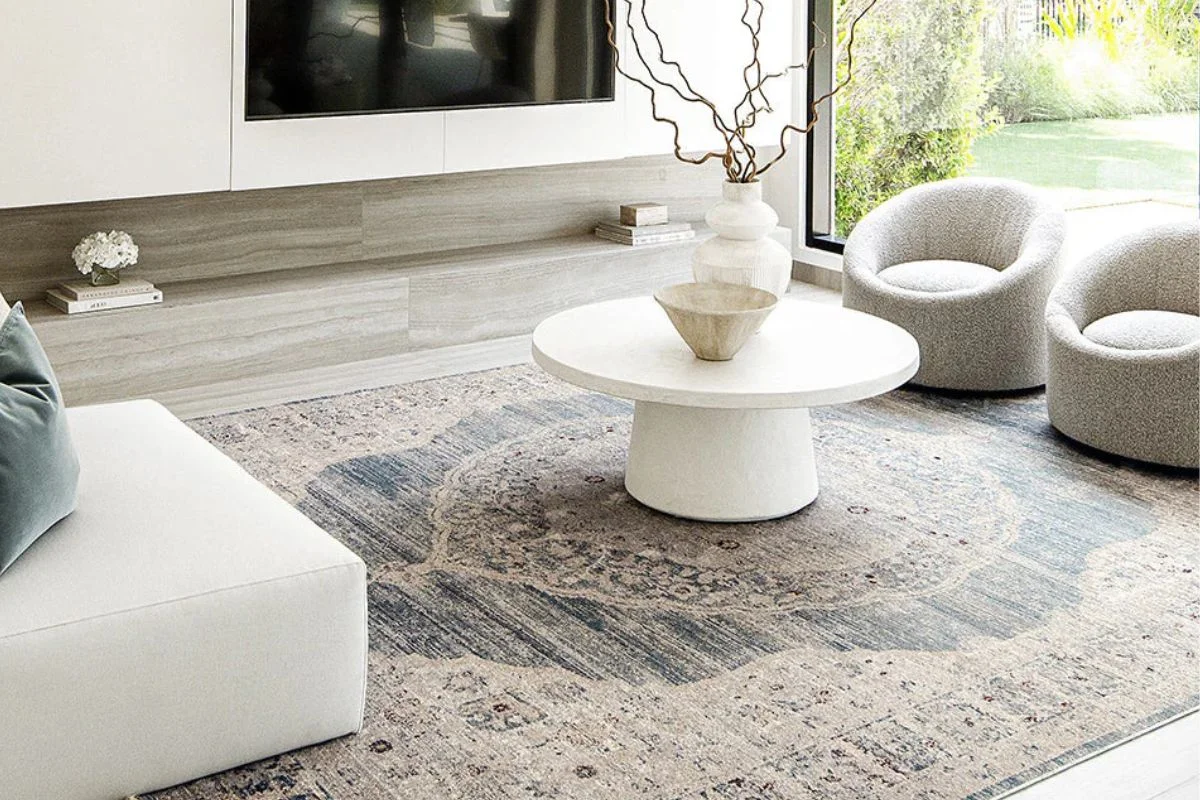Carpets add comfort, warmth, and style to any room, making them a popular choice for many homeowners. But with growing awareness about environmental impact, more people are considering how their flooring choices affect the planet. Carpeting can be surprisingly complex when it comes to sustainability—factors like materials, manufacturing, and disposal all play a role in its environmental footprint. In this blog, we’ll explore the hidden impacts of carpets on the environment and delve into how you can make more eco-conscious choices. From sustainable materials to recyclable options, let’s see how carpets can fit into a greener home.
Environmental Impact of Traditional Carpet Manufacturing
Traditional carpet manufacturing has significant environmental impacts due to its reliance on petroleum-based fibers, energy, and water. Synthetic materials like nylon and polyester are made from fossil fuels, contributing to pollution and greenhouse gas emissions. Manufacturing processes often involve toxic chemicals, leading to air and water pollution. The carbon footprint of traditional carpet production is substantial, and the industry has historically faced criticism for its lack of sustainable practices. Considering these impacts, homeowners can make more eco-friendly choices by opting for carpets produced with renewable materials, reduced emissions, and responsible resource management, which lessens their environmental footprint.

Carpet Materials and Their Sustainability
Carpet materials vary widely in sustainability. Synthetic fibers, such as nylon and polyester, are durable but petroleum-based, making them less eco-friendly. In contrast, natural fibers like wool, jute, and sisal are biodegradable and come from renewable sources, reducing their environmental impact. Wool is particularly sustainable, as it’s naturally insulating and biodegradable. Some recycled synthetics, like recycled PET, are gaining popularity, combining durability with environmental benefits. Plant-based fibers and recycled options help reduce waste, pollution, and resource consumption. Choosing carpets made from sustainable materials supports environmental conservation and offers a greener alternative to traditional synthetic options.
Carpet Lifespan and Durability
A carpet’s durability is essential to its sustainability. High-quality carpets that last longer reduce the frequency of replacements, lowering resource demand and waste. Durable carpets withstand wear and tear, making them a wise investment for reducing environmental impact. Synthetic carpets like nylon are known for durability, while wool and other high-quality natural fibers can also provide long-lasting use with proper care. Homeowners should consider durability alongside eco-friendliness, choosing carpets that offer both longevity and environmental benefits. Longer-lasting carpets ultimately conserve resources and reduce the environmental impact associated with frequent carpet manufacturing and disposal.
Recycled and Recyclable Carpets
Recycled and recyclable carpets present an eco-friendly option, often made from materials like recycled PET or other reclaimed fibers. These carpets utilize waste materials, reducing landfill waste and decreasing resource consumption. Many recycled carpets offer the same durability and aesthetic appeal as traditional options. Recyclable carpets, designed to be repurposed or broken down at the end of their lifespan, further reduce environmental impact by minimizing waste. Some manufacturers even offer take-back programs for carpet recycling. By choosing recycled or recyclable carpets, homeowners support a circular economy, reducing the need for virgin resources and contributing to sustainability.
Eco-Friendly Carpet Backing and Padding Options
Carpet backing and padding are essential for sustainability, as traditional options often use materials with high environmental impacts and potential off-gassing. Eco-friendly alternatives include natural latex, recycled rubber, and felt padding. These materials reduce reliance on petroleum-based products and minimize chemical emissions, benefiting both the environment and indoor air quality. Natural latex is a renewable, biodegradable option, while felt padding often contains recycled content, making it a sustainable choice. Using eco-friendly backings and padding promotes a healthier home and supports sustainable manufacturing practices, providing a greener foundation for carpet installations.
Indoor Air Quality and Health Considerations
Carpets can significantly impact indoor air quality due to the potential release of volatile organic compounds (VOCs) from synthetic materials and chemical treatments. Low-VOC carpets are available, providing a safer option for those sensitive to air quality. Toxin-free carpets made from natural fibers, like wool and jute, often offer hypoallergenic properties and contribute fewer pollutants to indoor air. Consumers can look for carpets certified as low-VOC, ensuring minimal off-gassing and fewer allergens. Choosing carpets with health-focused materials not only supports sustainability but also creates a safer, cleaner environment for households, benefiting everyone’s well-being.
Carpet Care and Maintenance for Longevity
Proper carpet care prolongs lifespan, contributing to sustainability by reducing replacements. Regular vacuuming helps maintain appearance and minimize dirt buildup, extending the carpet’s life. Eco-friendly cleaning methods, like using mild, biodegradable solutions and spot cleaning as needed, help keep carpets fresh without harming the environment. Avoiding harsh chemicals and excessive water usage also benefits indoor air quality and reduces carpet wear. For natural fiber carpets, gentle care methods like dry cleaning are recommended. By prioritizing care and maintenance, homeowners can make their carpets last longer, reducing the environmental impact associated with frequent replacements.

Disposal and End-of-Life Options for Carpets
Carpet disposal presents sustainability challenges, as most carpets end up in landfills due to limited recycling options. However, more eco-friendly disposal methods are emerging. Recycling programs allow some carpets to be repurposed or broken down, minimizing waste. Donating carpets in good condition to charities or repurposing them for non-residential use (e.g., garages or outdoor areas) also extends their life. Certain manufacturers offer take-back programs, helping consumers responsibly dispose of used carpets. Considering end-of-life options when purchasing a carpet can significantly reduce landfill contributions, making carpets a more sustainable choice through thoughtful disposal.
Certifications to Look for When Buying Sustainable Carpet
Certifications can help consumers identify sustainable carpets. Programs like Cradle to Cradle and Global Organic Textile Standard (GOTS) certify carpets made with eco-friendly materials and manufacturing practices. The Green Label Plus certification by the Carpet and Rug Institute indicates low VOC emissions, ensuring better indoor air quality. These certifications provide a benchmark for eco-friendly carpets, assuring buyers that carpets meet sustainability standards. By choosing certified carpets, consumers can make informed, responsible purchases that support environmental health and safety, creating a demand for greener products and promoting sustainable manufacturing in the carpet industry.
Conclusion
Carpeting can indeed be a sustainable choice for your home when approached thoughtfully. By considering factors like eco-friendly materials, recyclable options, low-impact manufacturing, and proper maintenance, homeowners can significantly reduce the environmental footprint of their carpeting. Selecting durable carpets, exploring responsible disposal methods, and looking for reputable certifications allow you to enjoy the warmth and comfort of carpets without compromising on sustainability.




